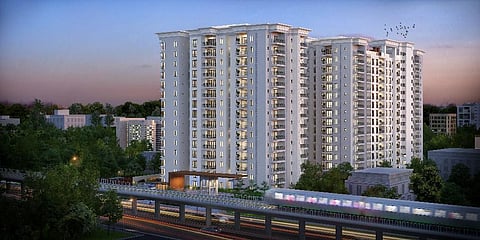Investment in real estate is one of the most important financial decisions as it takes a large share of an investor’s portfolio and each investment uses up a significant amount of capital. The security associated with the ownership of a tangible asset, the relatively non-volatile nature of the asset class, and the predictability of returns on investment are probably the reasons for the popularity of real estate as an investment. While the above factors are time tested attributes, there are some important factors one needs to consider before venturing into the purchase of a property, especially one that may be the culmination of savings over numerous years.
Things To Consider Before Investing In A Real Estate Project
One needs to carefully evaluate and narrow down on developers or properties that offer transparency in pricing
One of the key factors to consider before embarking on the journey of a property purchase in the city. If the intended purchase is purely for an investment, then one needs to look at the entire nation as the target area and not one’s own city. The best investments are in fast-growing cities and not all cities are growing equally fast with consistent demand growth. While people understand how demand growth can help increase prices, not everyone realizes that demand growth is also important to reduce the riskiness of the investments. Real estate is a capital-heavy industry where it takes many years of investment and effort before a project is brought to market. Therefore, it will inevitably lead to periods of excess supply. When that happens, in cities with fast population growth, developers tend to hold on to prices and wait for growth in demand to absorb the excess inventory. However, in cities with weak population growth, excess supply is often dealt with by price cuts, which is never good for an investor.
In addition to population growth, another key consideration should be growth in income levels. Property prices move in tandem with household income, so cities with a lot of high-paying knowledge workers are better for property prices than cities that have a lot of manufacturing jobs. Knowledge-based industries, such as the Tech sector, tend to have a high percentage of their employees earning good incomes. The manufacturing sector, on the other hand, tends to be top-heavy with a high percentage of employees earning low wages. For property prices, cities with a knowledge-based economy are a safer long-term bet.
Once a city is narrowed down, micro-market selection entails consideration of proximity to high density employment areas, schools, socio-cultural infrastructure, public transport, and road connectivity. Proximity to metro stations will be a major factor in home buyers’ checklists in the years to come. The metro, over time, will create a two-tier effect on property prices in the sense that projects close to metros will be priced significantly higher than other projects in the same area but beyond walking distance to the metro. Another effect of being close to the Metro is that the price difference between different areas of the city may come down as it will no longer be as inconvenient to enjoy the social infrastructure or job opportunities in other parts of the city. Making it convenient for one to live in one part of the city and commute anywhere in the city without breaking a sweat will result in projects near metro stations giving investors a better return compared to equivalent projects that are not near the stations.

Connectivity and proximity to public transport add tremendous value to a property
An oft-ignored but important aspect to the selection of the property is architecture and design. In the past year, with more people spending extended durations in the confines of their homes, both additional and flexible spaces within the four walls and wide open spaces and sports amenities within communities have grown in significance and will continue to do so in the years to come. One needs to look at master and floor plans thoroughly, more than just at the numbers in terms of carpet area, also into the functional aspects of design. For indoor spaces, one needs to study if the floor plans have taken into consideration the fitment of furniture, space required for performing the intended activity while also taking into consideration the size of a typical Indian family the home is meant for. Usable outdoor decks need to also be considered to enable spending time in open spaces.

Floor plans need to accommodate all your furniture and still have space to move around comfortably
Expansive outdoor spaces within one’s community allow one to relax, while also catering to one’s fitness and leisure requirements, and these need to be high on the priority list while shortlisting the projects. As the country develops, the ability to engage in pastimes that allow us to be fit and healthy will gain priority, and projects with a lot of amenities will be more desired than ones without. While considering these features, a critical factor would be the per-capita density of amenities. If each tennis court is to be shared with thousands of apartments within a community, the chances are that one will never get to use it when it is most convenient, say during the weekend. If the same is shared by fewer residents, the amenity becomes a lot more usable, thereby pushing the popularity and demand for the project upwards in the market.

Open spaces, sports, and recreational amenities and their density play a pivotal role
A well designed property goes a long way in creating wealth by not only adding visual appeal but also an invaluable factor of functional usability in its design, thereby making it future-proof. A perfect fusion of beauty and functionality will be the catalyst in enabling a property to appreciate faster than others in the same market. Projects that have incorporated all of the above elements into their design, making them relevant to both end users and investors are the ones to be considered in any market.

Infinity swimming pool at the highest point in the tower, make it both beautiful and usable
Everyone thinks about the brand when investing in property. But this could be a mistake in many cases. Most of the larger brands have large teams churning out projects at a rapid rate in order to achieve scale. They rarely have the ability to devote time and attention to the details of design that make a house into a home. As a result, their projects tend to have a cookie-cutter and soulless feel once completed and occupied. As an investor, it makes sense to ignore the brand and pay attention to the underlying reality of the project as a project, once completed, will command its price based on its merits rather than its brand.
Everyone wants the best price while purchasing a property, but the experience for most people is quite the contrary, with the price being dependent on the ability to haggle with the developer. The price one pays needs to be linked to the value of the underlying unit and not the ability to bargain. This is an important aspect for an investor because you never want to be the person who paid a high price while other investors got a deep discount and go on to dump their inventory later on at a lower price. One needs to carefully evaluate and narrow down on developers or properties that offer transparency in pricing. This will avoid the stress and save time, thereby allowing the buyer to focus on the other important factors while finalizing a property, be it for an investment or for self-occupancy.
To summarize, the right location, superior design in the master and floor plans, a wide range of amenities, outdoor spaces, and transparent pricing are the key attributes one needs to consider when embarking on the journey of purchasing a property - a safe and sturdy foundation of one’s wealth. As Franklin D. Roosevelt once famously said “Real estate cannot be lost or stolen, nor can it be carried away. Purchased with common sense, paid for in full, and managed with reasonable care, it is about the safest investment in the world.”
The author is CEO of SmartOwner, Asia’s Leading Real-Estate Fintech firm
DISCLAIMER: Views expressed are the authors' own, and Outlook Money does not necessarily subscribe to them. Outlook Money shall not be responsible for any damage caused to any person/organisation directly or indirectly.